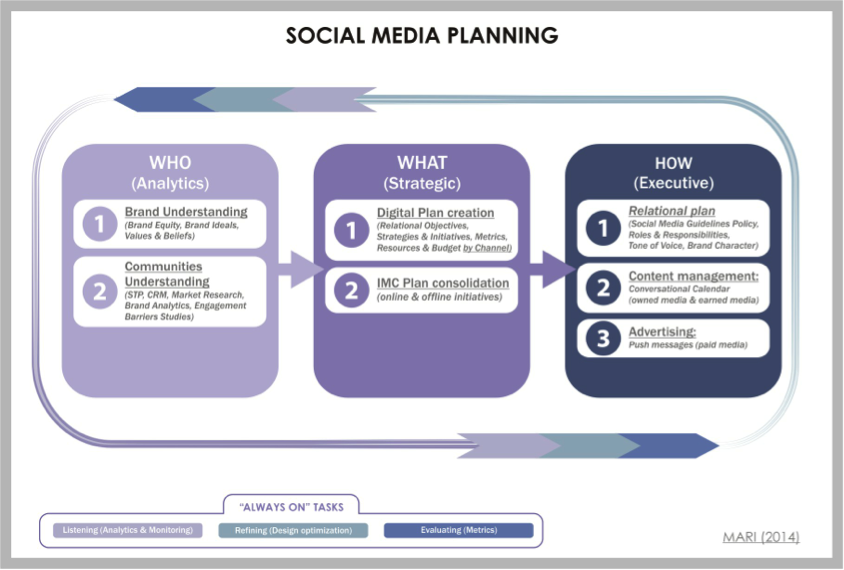Brand Ideals definition: first step in your Branding Strategy
Marketing and corporate communications managers are often confronted with the need to anticipate market trends. In order to be at the cutting edge of innovation, they are often willing to adopt technology that can generate visibility and a sense of innovativeness, despite the value delivered to consumers can be objected.
Too often, a marketing goal becomes to distribute brand messages across the globe in the fastest and cheapest way.
This leads to the communication idea and the technological tools being chosen over the brand strategy. In other words, the communication campaign becomes a mere tactic with no (or even negative) long-term business implications.
At the very core of a content strategy, marketing managers should alwaysfocus their brand strategy on brand ideals.
A brand ideal is the higher purpose of a brand or organization, which goes beyond the product and the service it sells (WPP, 2012).
The overall brand purpose is often neglected and is not linked to the defined content strategy.
According to Jim Stengel (2011), former global marketing officer (GMO) at Procter & Gamble, “The ideal is the brand’s inspirational reason for being. It explains why the brand exists and the impact it seeks to make in the world. A brand ideal actively aims to improve the quality of people’s lives. It creates a meaningful goal for the brand – a goal that aligns employees and the organization to better serve customers.” Stengel has extensively studied the interrelationships of people’s bonding with brands and the growth in those brands’ financial value. To do so, he used a database, provided by the agency BrandZ, which contains brand-equity-related information on more than 50,000 brands in 31 countries within 380 categories, from 1998 to the present.
The implications of Stengel’s study are relevant to any brand manager. One of the most profound finding is that brand ideals – that is, the higher-order benefit the brand gives to the world – drive the performance of the businesses that registered the highest growth in the mentioned period.
The most successful businesses are those in which the brand ideals are deeply centered in one of the five areas of fundamental human values.
These human values are considered to be “universal”, as any human being generally wishes to actively experience happiness, to connect with one another in meaningful ways, to explore the surrounding world, to feel confident, and to positively affect society. Certain companies focus on the “eliciting joy” ideal, such as Coca-Cola, Emirates or MasterCard. Others, such as Skype, Nokia, and Facebook, have associated their brands with “enabling connection.” Some brands, such as Google, Apple, or Red Bull, wish to “inspire exploration,” while companies like Hugo Boss, Heineken, and Mercedes-Benz, aim to “evoke pride,” giving people security or vitality. Yes others focus on “impacting society” in a broad sense; these include Chipotle, Dove, and Innocent.
Although a brand might be directly or indirectly connected to several of the five universal human values mentioned earlier, it is important that one of the areas is dominant. For example, Facebook was created to enable connections among peers. Over time, the service has evolved to include many other features that have increased the users’ perceived value in certain areas of pride (for example, you can easily share your entire life and receive a sense of appreciation from others), the area of joy (for example, play games, listen to music, or watch videos), the area of exploration (for example, the new feature called “Search Graph” that will revolutionize the way we retrieve social-related information) and the area of impacting society (for example, you can espouse social causes and donate money). However, almost all of Facebook’s corporate communication, as well as any other marketing campaign, focuses on the brand ideal of “connecting people.”
It is strategically important that a brand stays true to its brand ideals along the journey, as this influences the way people perceive and think about the brand. Whenever a brand plays on several brand ideals at the same time, it is necessary to prioritize these ideals.
Alex Mari - Founder & Creative Director of BrandMate - www.brandmate.it




Comments